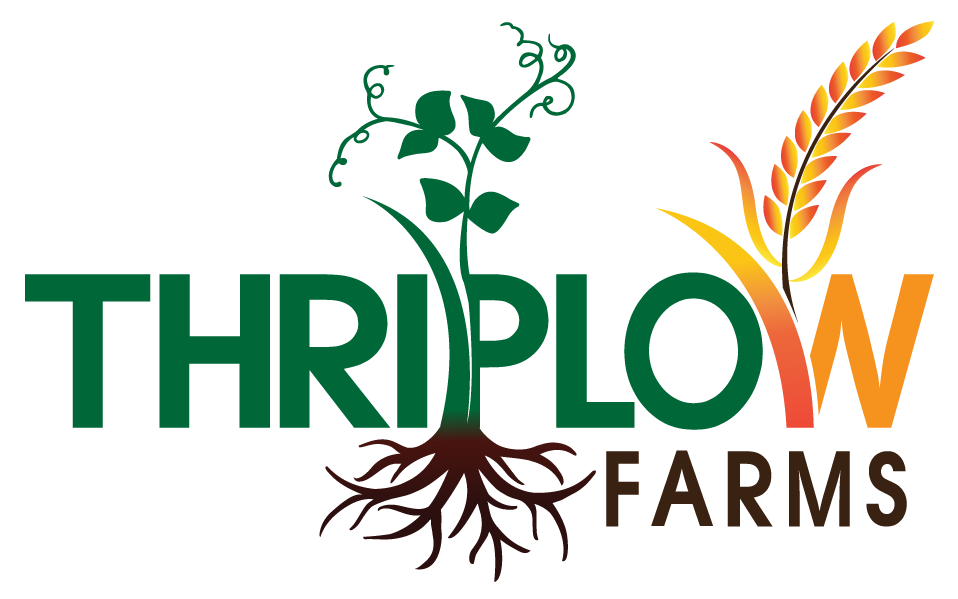Day 45 - More Pasture Cropping
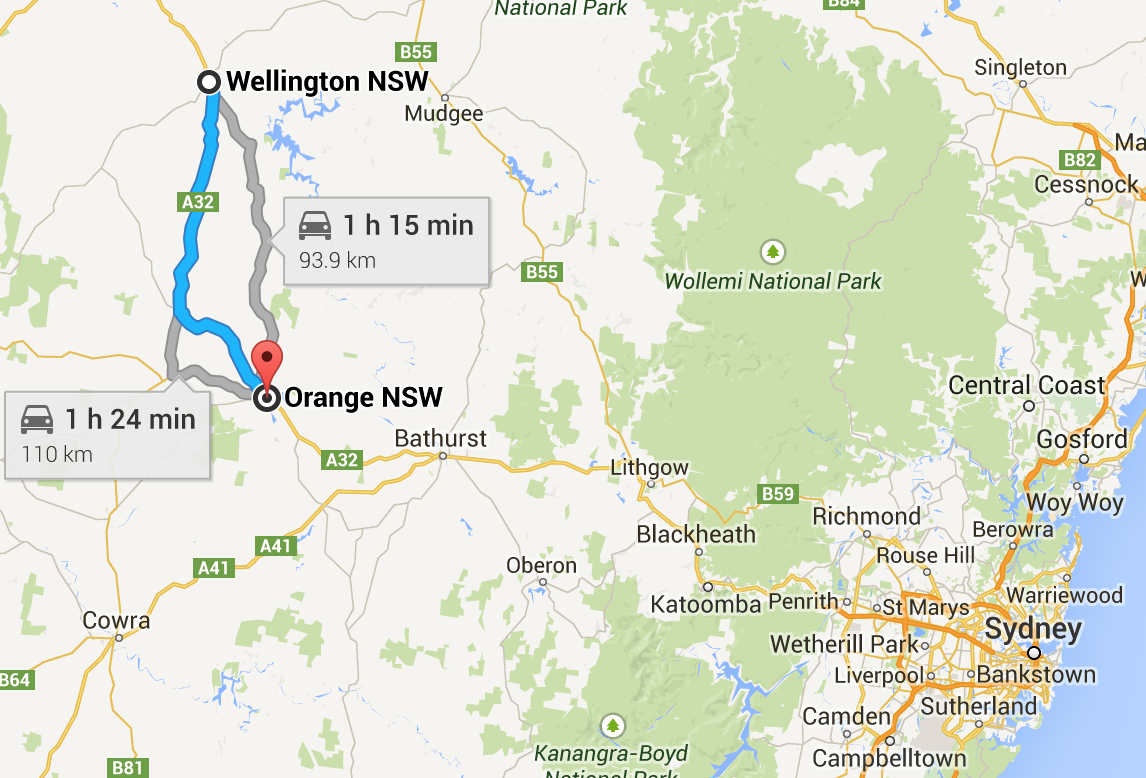 Reality check.Angus Maurice is a friend of Colin Seis, and spent over 5 years training people how to implement Pasture Grazing on their own farms. He also taught "No Kill" farming, which is similar to Pasture Cropping, but more extreme. It uses no chemicals at all, and also stipulates the cash crop must be drilled with a disc opener machine, so that there is minimum disturbance.
Reality check.Angus Maurice is a friend of Colin Seis, and spent over 5 years training people how to implement Pasture Grazing on their own farms. He also taught "No Kill" farming, which is similar to Pasture Cropping, but more extreme. It uses no chemicals at all, and also stipulates the cash crop must be drilled with a disc opener machine, so that there is minimum disturbance.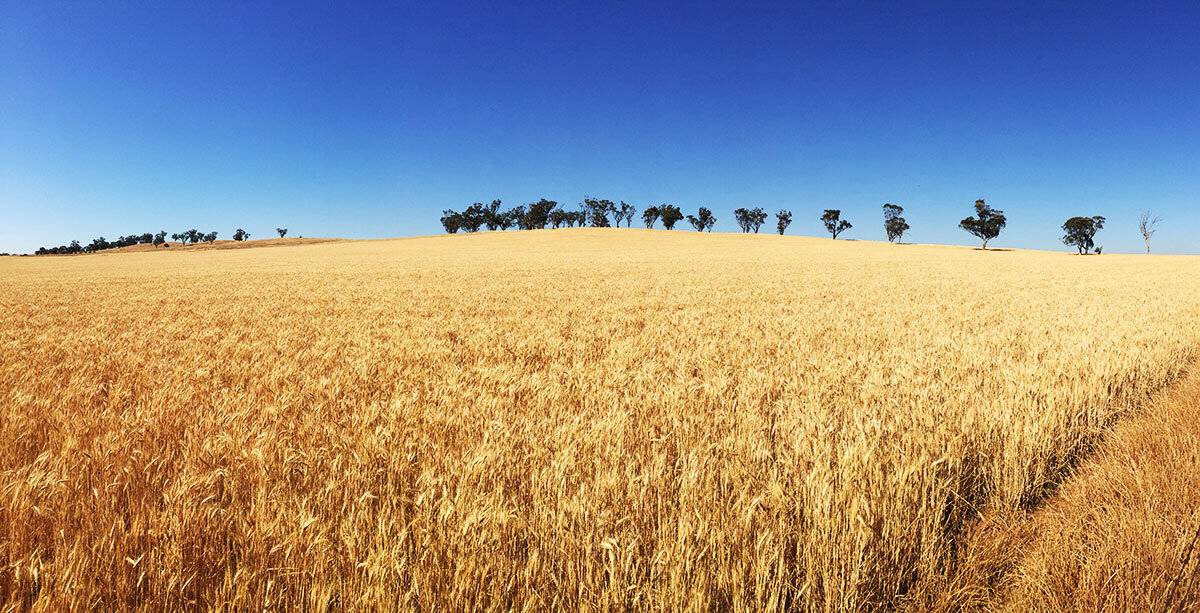 The problem is, he now doesn't really believe that it works. You can't say he hasn't tried, after 7 years of continuous Pasture Cropping and a field that he has left in the system now to see what happens in the even longer term. What Angus finds is that crop yields are just too badly effected - he reckons on average they will produce only 50% of a conventional system. This is obviously a huge drop, and the slight increase in grazing income, plus the reduction is crop growing costs, does not get anywhere near to making up the difference.As I mentioned, there is one field that has been left in Pasture Cropping, and this year it is growing spelt. It had been attacked by insects earlier in the season and had some pretty big bare patches; however Angus did not believe that was due to the cropping system. But there was no denying that this field looked significantly worse than his conventionally cropped land. It was uneven, and looked at least 3 weeks behind. he is anticipating it will yield half as much as the other fields. It must be said that one difference here is that the fields were drilled with a cash crop every year, rather than once every 4-7 years as at Colin's farm. Angus says he has tried all different techniques - high inputs, low inputs, but nothing makes it work. He puts this down to competition from the "dormant" grasses for moisture and nutrients.Angus no longer works as a Pasture Cropping educator.
The problem is, he now doesn't really believe that it works. You can't say he hasn't tried, after 7 years of continuous Pasture Cropping and a field that he has left in the system now to see what happens in the even longer term. What Angus finds is that crop yields are just too badly effected - he reckons on average they will produce only 50% of a conventional system. This is obviously a huge drop, and the slight increase in grazing income, plus the reduction is crop growing costs, does not get anywhere near to making up the difference.As I mentioned, there is one field that has been left in Pasture Cropping, and this year it is growing spelt. It had been attacked by insects earlier in the season and had some pretty big bare patches; however Angus did not believe that was due to the cropping system. But there was no denying that this field looked significantly worse than his conventionally cropped land. It was uneven, and looked at least 3 weeks behind. he is anticipating it will yield half as much as the other fields. It must be said that one difference here is that the fields were drilled with a cash crop every year, rather than once every 4-7 years as at Colin's farm. Angus says he has tried all different techniques - high inputs, low inputs, but nothing makes it work. He puts this down to competition from the "dormant" grasses for moisture and nutrients.Angus no longer works as a Pasture Cropping educator.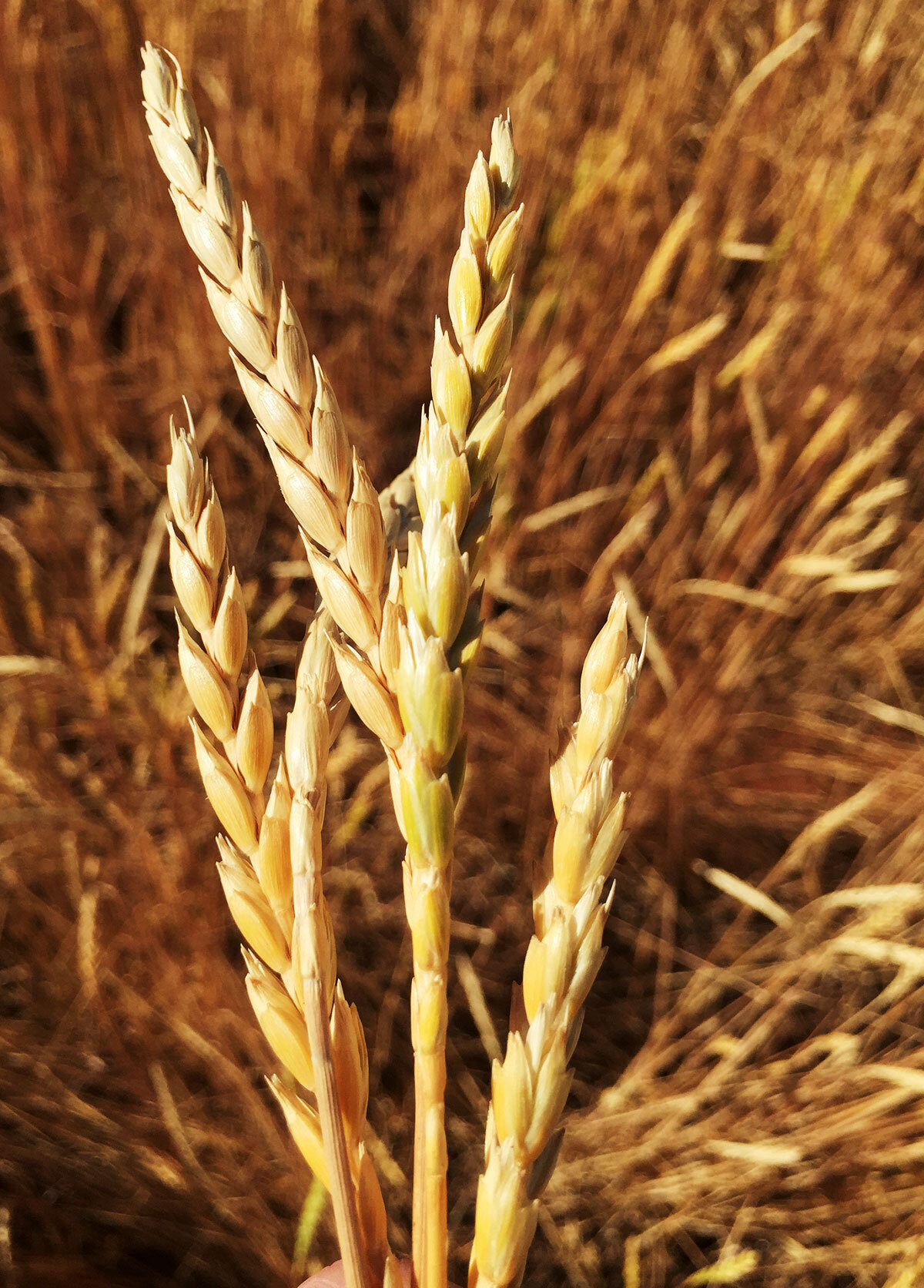 My second visit of the day was to the NSW Department of Primary Industries to meet one of their soil scientists, Warwick Badgery (great name!). He too is not a great believer in Pasture Cropping, and has done quite a lot of research into it. I should also mention that both Warwick and Angus do not know of anyone else who has managed to make Pasture Cropping work as well as it does with Colin Seis. Warwick puts this down to the unusual soil Colin has, which is very drought prone, and also very low in nutrients.[It was plain to see when I visited Colin that the ground was made up almost entirely of granite, not dissimilar to some wine growing regions I have seen. The results of his soil tests did also show very low levels of total P, of around 850kg/ha.]Warwick does not rubbish the idea of Pasture Cropping completely, he thinks it is a good technique to be able to use opportunistically when conditions are favourable and a cash crop looks like it may be profitable. This whole situation really shows up the fine line between the "it won't work on my farm" conservative mentality, and the reality that conditions are different on each piece of land. It's a tricky one.Warwick has done a lot of work into farmland carbon sequestration rates, and how to maximise them. Apparently in Australia 70% of the nitrogen used by cash crops comes from SOM (Soil Organic Matter) mineralisation. This means that the organic matter is effectively burnt; the carbon leaves as CO2, and the nitrogen (and other nutrients) are left behind to be used by the crop. Obviously this is not sustainable in the long term unless there are recovery periods being used - which is where mixed farming comes in to play. A lot of farms over here incorporate grazing pastures into their cropping land, and this is how they can get away with it.In Australian conditions, the absolute maximum amount of carbon that can be sequestered is 1t/ha/yr, which works out as roughly 0.3% of SOM. To get this figure a field must be a perennial pasture, and it must have high levels of inputs (nitrogen and phosphorus particularly). Interestingly, he claims that although it is possible to capture carbon without the inputs, it will remain in an unstable form that is easily lost again. On a similar note, I'm told that there are indeed bacteria that will fix phosphorus from the soil, but they only work when the levels are so low already that it would not be possible to grow a profitable crop.
My second visit of the day was to the NSW Department of Primary Industries to meet one of their soil scientists, Warwick Badgery (great name!). He too is not a great believer in Pasture Cropping, and has done quite a lot of research into it. I should also mention that both Warwick and Angus do not know of anyone else who has managed to make Pasture Cropping work as well as it does with Colin Seis. Warwick puts this down to the unusual soil Colin has, which is very drought prone, and also very low in nutrients.[It was plain to see when I visited Colin that the ground was made up almost entirely of granite, not dissimilar to some wine growing regions I have seen. The results of his soil tests did also show very low levels of total P, of around 850kg/ha.]Warwick does not rubbish the idea of Pasture Cropping completely, he thinks it is a good technique to be able to use opportunistically when conditions are favourable and a cash crop looks like it may be profitable. This whole situation really shows up the fine line between the "it won't work on my farm" conservative mentality, and the reality that conditions are different on each piece of land. It's a tricky one.Warwick has done a lot of work into farmland carbon sequestration rates, and how to maximise them. Apparently in Australia 70% of the nitrogen used by cash crops comes from SOM (Soil Organic Matter) mineralisation. This means that the organic matter is effectively burnt; the carbon leaves as CO2, and the nitrogen (and other nutrients) are left behind to be used by the crop. Obviously this is not sustainable in the long term unless there are recovery periods being used - which is where mixed farming comes in to play. A lot of farms over here incorporate grazing pastures into their cropping land, and this is how they can get away with it.In Australian conditions, the absolute maximum amount of carbon that can be sequestered is 1t/ha/yr, which works out as roughly 0.3% of SOM. To get this figure a field must be a perennial pasture, and it must have high levels of inputs (nitrogen and phosphorus particularly). Interestingly, he claims that although it is possible to capture carbon without the inputs, it will remain in an unstable form that is easily lost again. On a similar note, I'm told that there are indeed bacteria that will fix phosphorus from the soil, but they only work when the levels are so low already that it would not be possible to grow a profitable crop.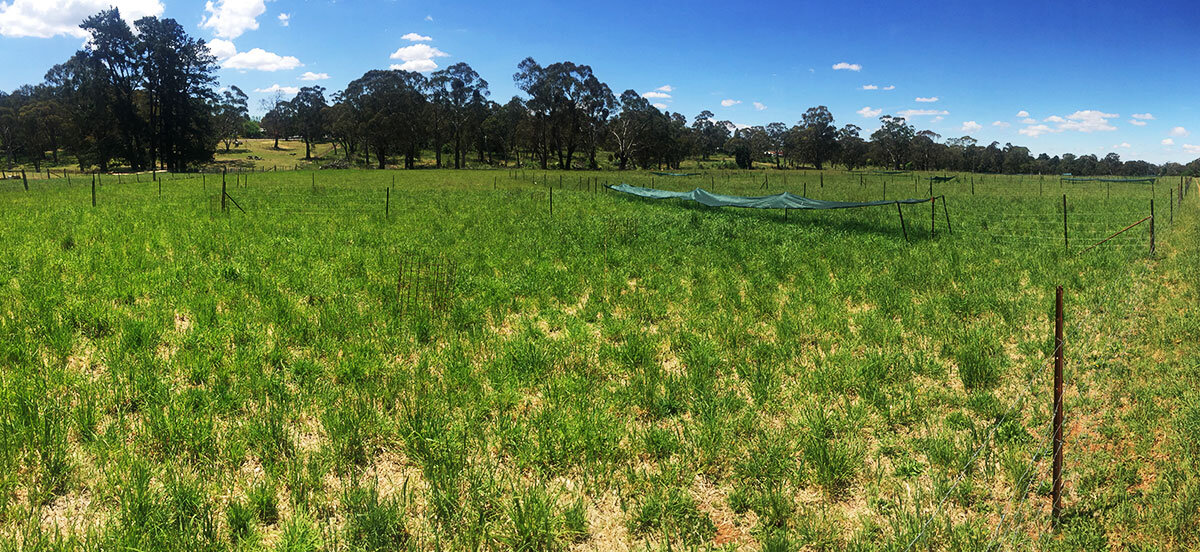 One of the trials that is just finishing now is comparing different grazing methods, and different stocking densities. There are treatments ranging from low intensity set stocking, through to high intensity, long rest systems. The longest rests are around 120 days, which Warwick used to check the claims that this would allow better nutrients cycling and availability. He thinks they are wrong; 120 days appears to be too long for this climate, which is much more temperate than that at any of the other farms I have been to in the last few days.One of the trials had severe over grazing last year, it was set stocked at a high animal density. The big surprise is that for some reason this year it has come back with incredible productivity, much higher than most of the other treatments. It looks as if either better nutrient cycling (through the sheep numbers), or a plant response to being grazed so heavily, has kicked them into overdrive. Not so surprisingly, the results are showing that with longer rests and higher stocking rates, feed quality and animal performance goes down. This is mitigated though by more efficient plant growth, so more animals can be farmed on a given area. Swings and roundabouts? But more animals and more plant matter must also mean more carbon going into the soil?There's no point living in an echo chamber and only speaking to people who agree with everything you already think. I think today was an good one, and although I didn't hear what I "wanted" to, it has to be better to get the full picture. Even if it does make things more complicated. Excellent.
One of the trials that is just finishing now is comparing different grazing methods, and different stocking densities. There are treatments ranging from low intensity set stocking, through to high intensity, long rest systems. The longest rests are around 120 days, which Warwick used to check the claims that this would allow better nutrients cycling and availability. He thinks they are wrong; 120 days appears to be too long for this climate, which is much more temperate than that at any of the other farms I have been to in the last few days.One of the trials had severe over grazing last year, it was set stocked at a high animal density. The big surprise is that for some reason this year it has come back with incredible productivity, much higher than most of the other treatments. It looks as if either better nutrient cycling (through the sheep numbers), or a plant response to being grazed so heavily, has kicked them into overdrive. Not so surprisingly, the results are showing that with longer rests and higher stocking rates, feed quality and animal performance goes down. This is mitigated though by more efficient plant growth, so more animals can be farmed on a given area. Swings and roundabouts? But more animals and more plant matter must also mean more carbon going into the soil?There's no point living in an echo chamber and only speaking to people who agree with everything you already think. I think today was an good one, and although I didn't hear what I "wanted" to, it has to be better to get the full picture. Even if it does make things more complicated. Excellent.
